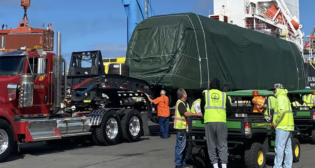
Hold On Tight!
Written by Carolina Worrell, Senior Editor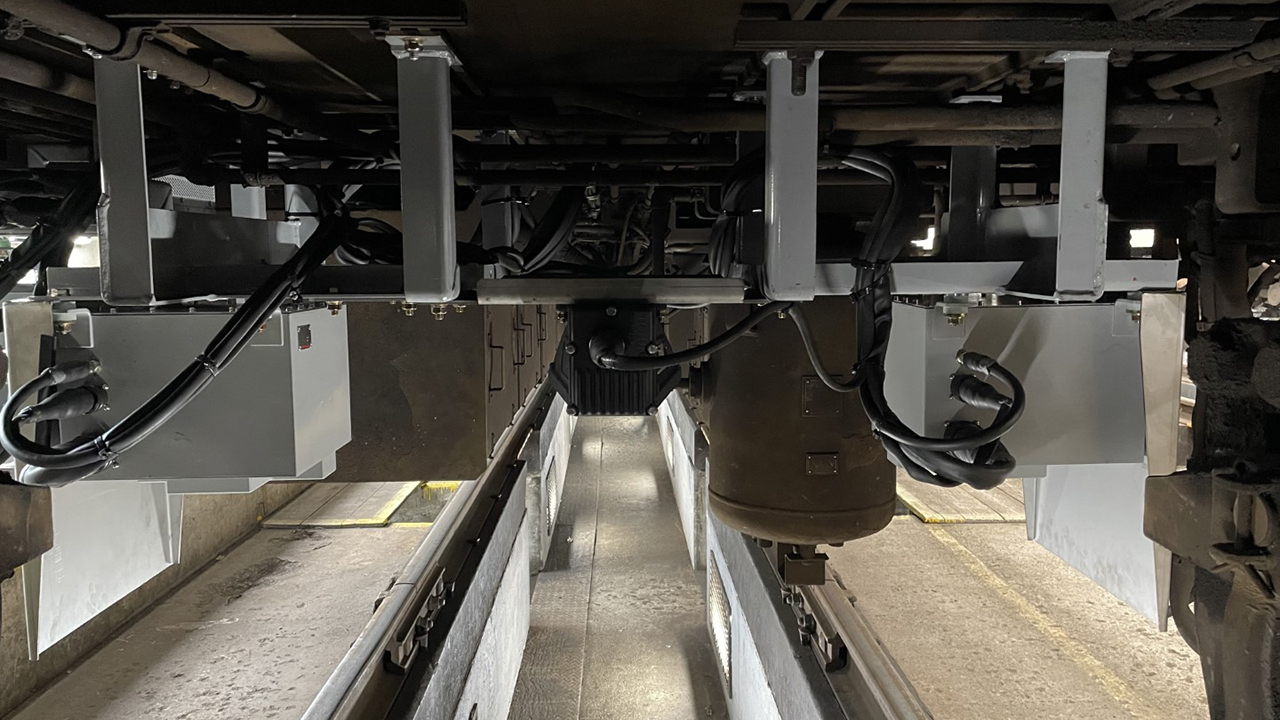
Kawasaki Track Technologies’ track fastener monitor employs cameras and global positioning sensors to identify potential defects with track fastening systems.
RAILWAY AGE, OCTOBER 2022 ISSUE: Rail fastening system suppliers continue to find new ways to deliver a tight hold and longer track life, helping to ensure the safety of heavy-haul, high-speed passenger rail and transit applications across North America and beyond.
There are numerous ways to fasten a rail to a crosstie. Traditional spikes and a wide variety of clips are available to suit any application. Gauge-holding capability, resiliency, noise reduction, ease of installation and maintenance, low life-cycle cost, safety: Railroads rely on fasteners with these qualities from such suppliers as Alcoa, MxV Rail, L.B. Foster, Howmet, Lewis Bolt & Nut Company, Pandrol, Progress Rail, J.Lanfranco, Kawasaki Track Technologies and Vossloh North America to perform reliably and safely under heavy traffic ranging from heavy-haul freight to high-speed passenger rail to transit.
To meet these requirements, suppliers continue to make incremental updates to their system technologies. Railway Age contacted fastening system suppliers to find out about their latest technologies, as well as market conditions following the COVID-19 pandemic.
“The market remains strong following a slowdown due to the pandemic,” says Kawasaki Track Technologies. “The global semi-conductor shortage has had an impact on sourcing. However, Kawasaki’s global market presence has been able to manage through the shortage.”
“In 2022, we saw steel prices spike,” adds Lewis Bolt & Nut Company Assistant Vice President, Sales George Apostolou. “We are fortunate, however, to be a domestic manufacturer that does not rely on foreign steel, allowing us to better control sourcing of materials used to manufacture our products.”
Following is a roundup of offerings from suppliers who responded to our inquiries.
Kawasaki Track Technologies, which “utilizes the latest machine vision and machine learning technologies to inventory fasteners and detect potentially defective fasteners,” announced in May 2022 the start of testing of a track fastener monitoring technology in Japan. This technology, the company says, while installed on a locomotive, will “capture high-resolution pictures and provide the necessary data for Kawasaki to utilize machine learning algorithms to identify potential track fasteners that need to be inspected and repaired.”
Kawasaki employs cameras and global positioning sensors to identify potential defects with track fastening systems. When the system is complete, it will provide near real-time exceptions to its customers to plan maintenance, Kawasaki says.
Kawasaki plans to roll out similar testing in the North American freight rail industry this fall/winter and says it will begin piloting the monitoring system in early 2023. This technology, according to the company, will “continue to expand Kawasaki’s autonomous track inspection technology to enhance railroad safety and operating efficiencies.” Kawasaki currently has a locomotive-mounted autonomous track geometry monitoring system that has been in production since 2021.
“Demand for innovative products that improve safety and operating efficiencies continue to have high demand in the North American freight marketplace,” says Kawasaki, adding that it expects this to continue in 2023 as more federal funding becomes available.
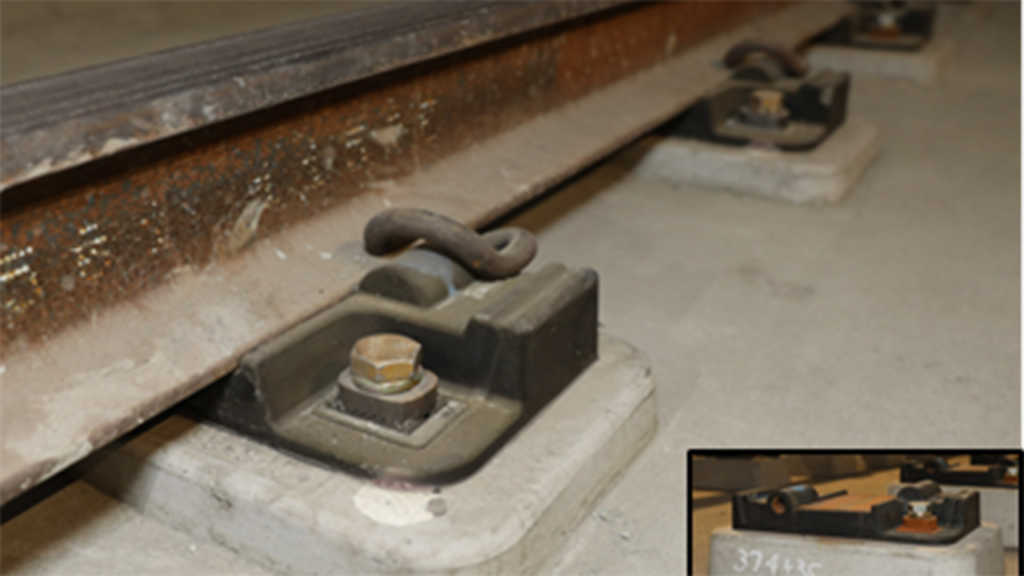
From rail anchors and all styles of clips to DF (direct fixation) and ballast mats, to turnouts, lift frogs and crossovers for transit, commuter and HAL (heavy axle loading) applications, Progress Rail, a Caterpillar company, supplies a full line of fastening and special trackwork solutions for heavy-haul and transit railways, offering “one of the broadest fastening product portfolios in the world.” By delivering innovative options, such as the e-Style Clip, the resilient Loadmaster DF for timber ties and the ADFF55 high attenuation DF fastener, Progress Rail says it supports its customers’ efforts to “improve efficiency, service quality and cost control.”
For example, according to the company, the DF Block System dramatically improves the quality of DF fastener installations for both standard and high attenuation units. The product, Progress Rail says, eliminates the risk of irregular support surface conditions, honeycombs in the concrete, and improper elevation setting of concrete embedded insert.
According to Progress Rail, on the Los Angeles Westside Purple Line Section 1, the DF Block system has reduced installation time with less material handling and fewer personnel required for the same work. The DF Block System “improves life expectancy of DF units, reduces maintenance, and provides a significant initial installation savings as compared to the 30-plus-year-old, top-down construction technique,” the company tells Railway Age.
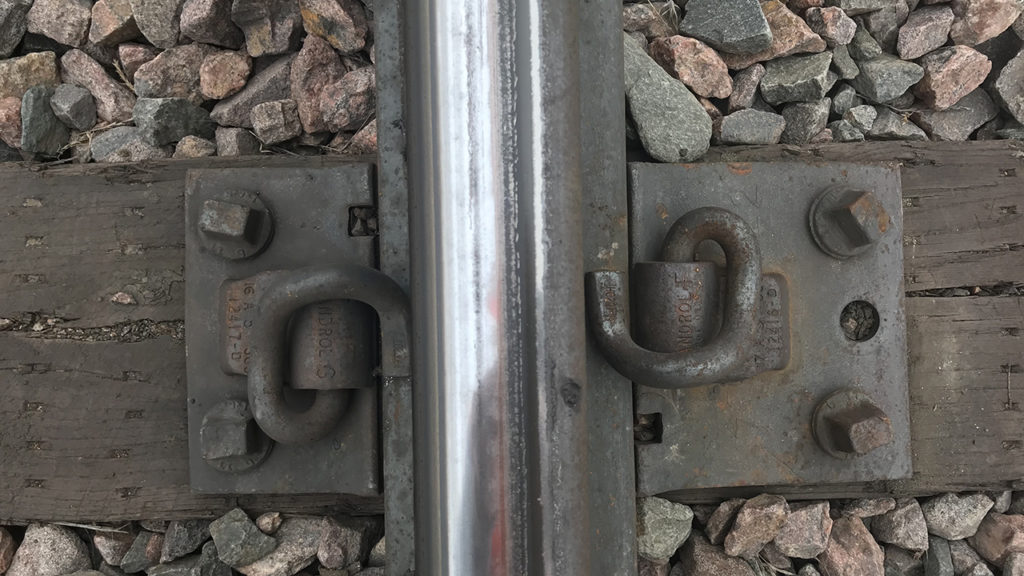
When asked about the latest in technology that it is using regarding its fastening systems, MxV Rail Senior Engineer II Yin Gao told Railway Age that the company “continues to test elastic fastening systems for wood ties as they are gaining popularity in the freight railroad industry for their high-resistance of rail rollover and gauge widening, especially on high-degree and high-grade curves.”
“We are also testing a new design of rail pad assembly that is for quick installation after worn metal shoulder repair for concrete ties,” Gao adds.
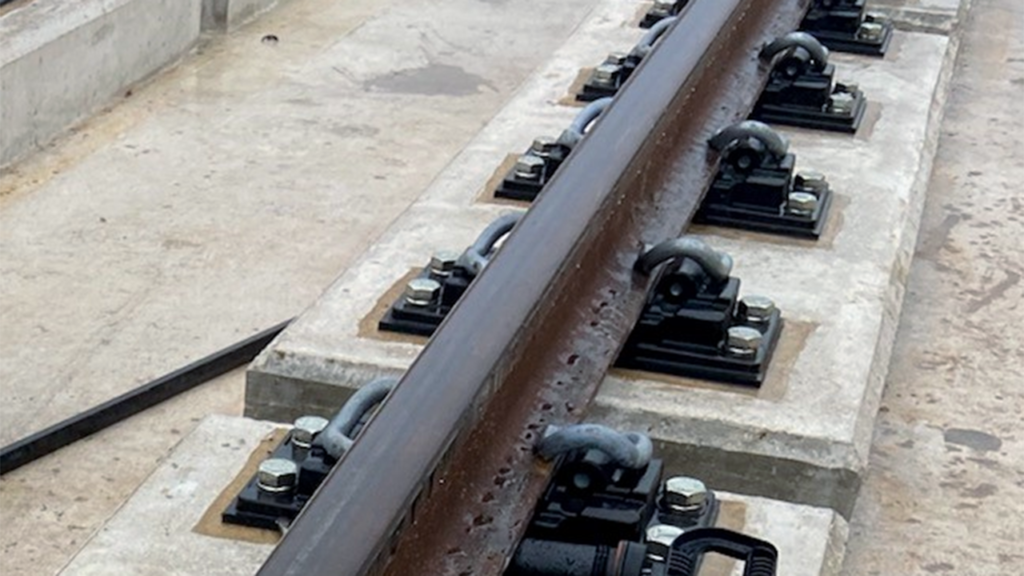
L.B. Foster Company has been supplying vulcanized rubber bonded DF fastening systems to transit agencies across the U.S. and Canada for more than 40 years. The company’s Transit Products Division “specializes in the design and development of noise and vibration mitigation and electrical isolation technologies for use in transit, commuter rail and freight applications.”
L.B. Foster offers a line of more than 50 fastening systems, each “uniquely designed” to offer varying stiffness and resiliency, rail seat width and height accommodations, lateral adjustment, and anchoring locations in a “single, easy-to-install unit,” the company says. “Our engineering team partners with our customers to design new fastening applications to meet their specification and design requirements,” L.B. Foster tells Railway Age.
Additionally, L.B. Foster’s research and development team is currently prototyping and testing new versions of high-resilient DF fastening systems, “offering greater noise and vibration mitigation than standard fasteners,” the company says.
“Our teams are researching specialty coatings to extend the life expectancy of fastening systems used in highly corrosive environments. We are also working on designs for our low vibration track (LVT) ties to enhance their performance and prevent debris and water intrusion into the boot and pad areas,” L.B. Foster tells Railway Age.
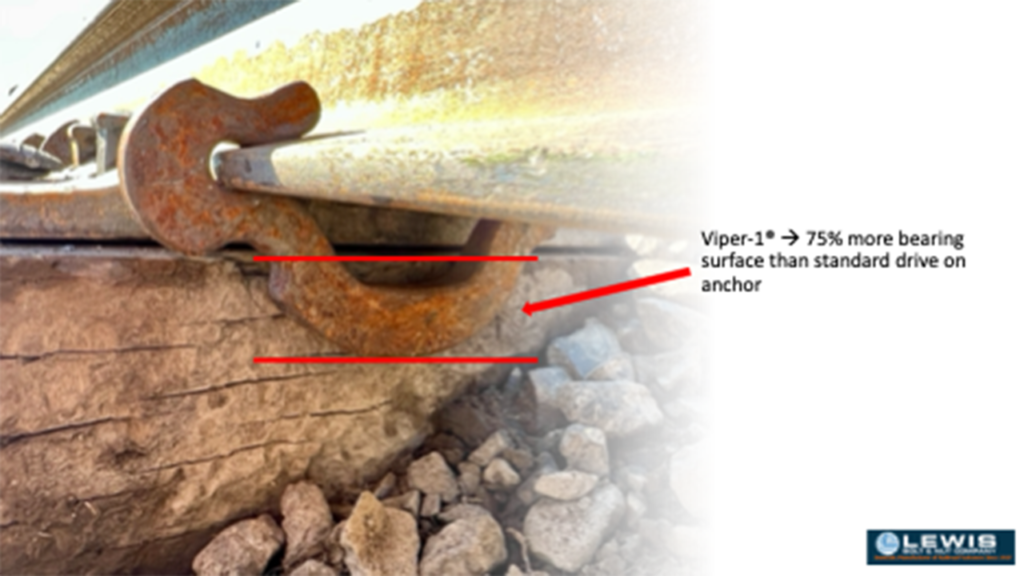
Lewis Bolt & Nut Company’s most recent product launch is the Viper-1® drive-on anchor, says Apostolou, who adds that the Viper-1® exceeds American Railway Engineering and Maintenance-of-Way Association (AREMA) Chapter 5, Section 7.1.4 requirements and has a minimum holding power of 9,000 pounds vs. 6,000 pounds (AREMA 7.1.4, Part B).

In addition, the Viper-1® has a much higher re-application rate than any current anchors on the market, Apostolou says. The anchor can be removed and reapplied multiple times because of improved stiffness in the design of the anchor jaw.
Another key benefit of the Viper-1®, Apostolou says, is the larger bearing surface against the tie. The Viper-1® boasts 75% more bearing surface than standard drive-on anchors. This results in increased tie life preventing movement and damage to the tie surface. In addition, Viper-1® offers an increased life cycle that is designed to last the life of the rail, Apostolou adds.

Lewis Bolt & Nut Company has two dedicated stand-alone facilities manufacturing a variety of anchors domestically. The company continues to work on incremental product improvements for customers and has been looking internally to make its manufacturing process more efficient, Apostolou says.
When asked to comment on the company’s overall business outlook given the availability of federal money, Apostolou said, “It is just very difficult to forecast any outlook moving forward into 2023, given the current global economic climate,” adding, however, that the company “continues to communicate with its customers for any signs of weakness or strength going forward.”


